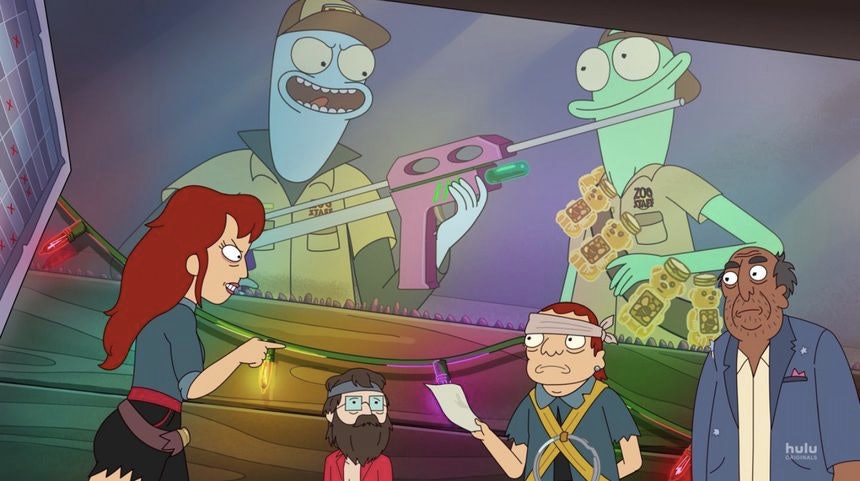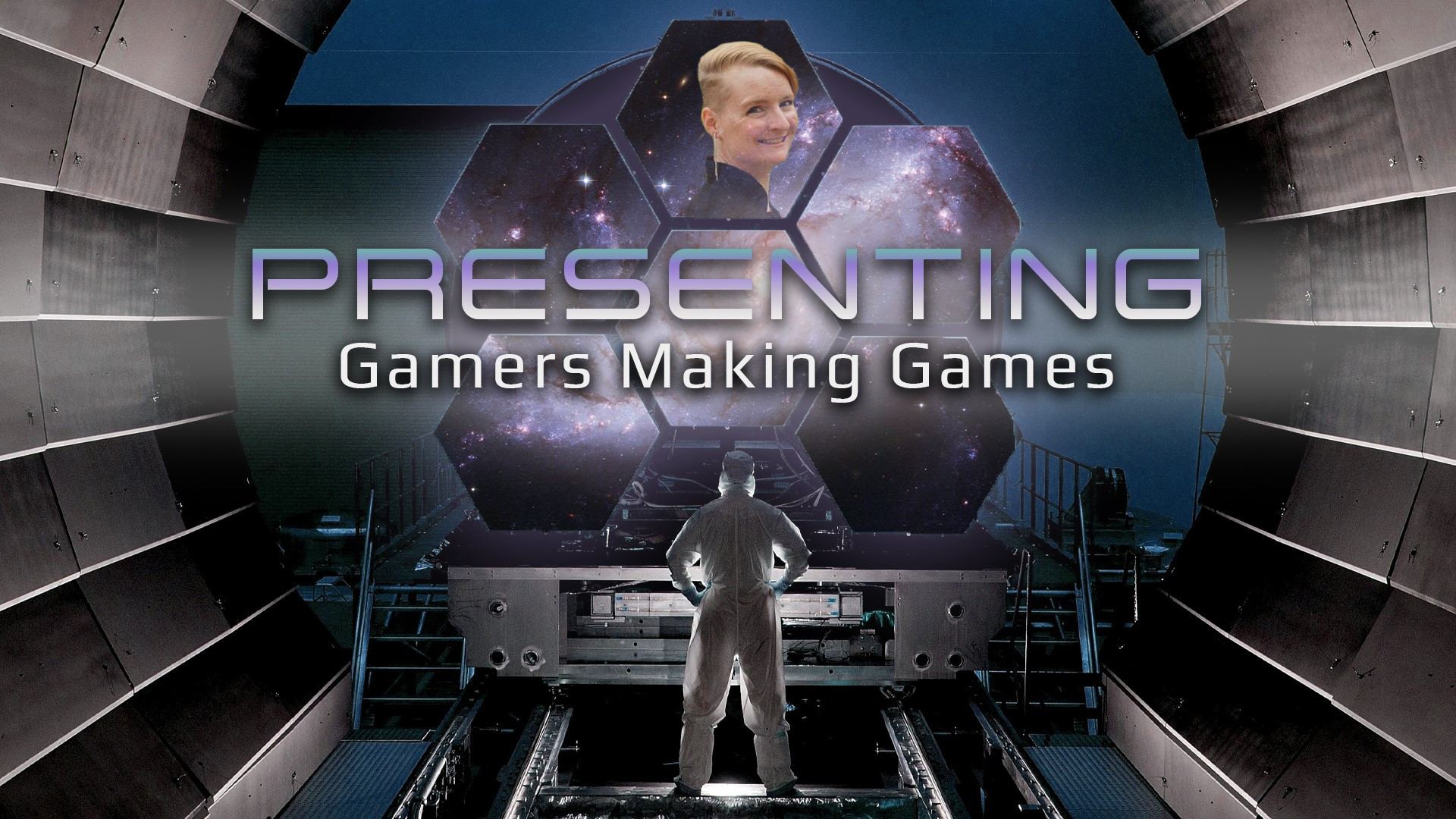My fellow GMs, let me tell you about Solar Opposites.
Solar Opposites is an American adult animated sitcom, created by Mike McMahan and Justin Roiland (co-creator of Rick and Morty, and the voice of Rick Sanchez). It follows a family of aliens stranded on Earth, struggling to adapt to life on another planet and trying to solve all of their problems with over the top sci-fi gadgetry.
75% of the time.
The other 25% of the time, Solar Opposites follows a lawless society of resource starved humans, most of whom were shrunk and inserted into this prison terrarium for inconveniencing Yumyulack, one of the above aliens.
I bring this up because it shows how we can run two campaigns at once, giving us time to plan for and build tension for one by occasionally switching to the other. Solar Opposites weaves between two full casts of characters, with different plots, storytelling styles, and perspectives in, technically, the same world. And so can you!
The Subcampaign
The Subcampaign is a style of running two long term campaigns alternately. Unlike running occasional one-offs, the subcampaign generally includes the same group of players, in the same game space, on the same schedule. The games take place in the same setting, with overlapping timelines, but barely crossing paths. And usually, the same GM runs both the campaign and the subcampaign.
Why?
You might think of your perfectly stable ongoing campaign and wonder why anyone would want to slit it up.
A/B Storytelling
Most serialized fiction, especially ensemble shows, juggle two plots. The plot that gets the spotlight is the A plot. The episode title refers to this plot. Commercials for the episode focus on this plot. The B plot gets less attention. Sometimes, it only exists to cut away from dramatic highs during the A plot, or to flesh out secondary characters. Occasionally, the B plot exists to set up the A plot of a later episode, often an important one.
For example, in the Gravity Falls episode The Inconveniencing, the A plot sees Dipper and Mable trapped in a haunted abandoned convenience store. The B plot is about Stan not wanting to watch a certain TV show, but he can’t be bothered to get up to find the remote or change the channel manually. I like this example not only because there’s clearly a high stakes plot and a low stakes plot, but the two plots divide the show’s supernatural family horromedy genre in two as well.
Solar Opposites handles the A/B plot divine in a unique way for several reasons. Firstly, the first view episodes that introduce The Wall (the terrarium) play out like typical episodes, occasionally cutting from Yumyulack’s carefree day to the nightmare scenario he thoughtlessly created. At first they’re cutaway gags. Then a subplot. Then, the Wall gets full episodes dedicated to it, with the main characters of the series playing incidental roles in the background.
Secondly, the episodes that follow the alien family tend to be one and done. Even if they kill a bunch of people and destroy a lot of property, the status quo resets by their next episode. The opposite is true of episodes set in The Wall. Serialized storytelling and an emphasis on continuity define these episodes. Actions have consequences. It would be like if your A campaign was Carrion Crown, but your B campaign was Hell’s Rebels.
ALL The Toys
Can’t decide which of two Adventure Paths your group wants to run? Run them both! Players have an idea for other characters? Don’t make them choose! Want a variety of tones but don’t want your adventure to feel tonally scattered? Compartmentalize them in separate stories! Heck, if you want to try 2e but don’t want to give up 1e, run a 2e B campaign. Or a 1e swan song B campaign.
As a player, I know that my character concepts fall into either characters I could play for years, and ideas that I’m fascinated by. I’d appreciate the opportunity to flex both muscles alternately.
Breathing Room
There are cliff-hangers, then there are season finale cliff-hangers.
Some mysteries and moments benefit from time to percolate. And instead of inundating your players with terrifying prospects at the end of every session, mix it up with some easier to digest ideas to end some sessions, and the odd harder to swallow revelation every few sessions, before switching campaigns for a week.
Similarly, if the campaign doesn’t go according to your plans -say a setup encounter before a boss fight wipes out the party’s resources, or the players dominate it and look like they’re ready to steamroll your big bad- and you need a little more time to consider the next step, time to switch gears!
Keeping Your Chocolate Out Of Your Peanut Butter
While the Pathfinder campaign setting gets praised for its melting pot approach to fantasy tropes and having a place for any campaign style you could ask for, when the extremes mix, campaign styles get lost. I like misfit characters more than most, but even I acknowledge that a Numerian jetpack barbarian messes with the tone of a Dracula-analogue campaign in the Immortal Principality of Ustalav.
Two concurrent campaigns means two opportunities to explore different areas of the same world, and take options from the same pool in different directions.
A Place To Say Yes, And A Place To Say No
Have you ever played a long game of Sim City, carefully working towards your goals and addressing the city’s needs. Then one day you sit down and are in a more chaotic mood, so you unleash monster attacks? That’s fine in a game with save points, but in a linear campaign, being in a different mood can wreak havoc.
If you and your players can’t agree on how generous the campaign should be when it comes to available options, a compromise could be to let you have the tighter campaign you feel you need to tell the story you have in mind, with the promise that every few sessions they get the gonzo campaign where their sharkfolk inventor can fly around the desert tossing villains into their rotary saw golems.
How?
Obviously convince, now you need to know how.
1. Set A / B Expectations
Since the main reason to run two campaigns is to serve two different masters, and offer two different experiences, you and your group need to work out what two experiences you want. Generally casual play that steps into long form storytelling from time to time? A mythic adventure that switches to street level to remind your super heroes what the life of the average citizen looks like? A serious, high stakes political drama intercut with beer and pretzel casual gaming?
2. Work Out A Schedule
What is the ratio of main campaign to subcampaign? How often will you shift, and when?
What causes a shift? Is it based on a real world calendar? Does a dramatic high point in the A campaign trigger a B campaign session? Is it needs based, like players wanting extra time to update their characters when they level? Mood based, like “I think we can use a B session next week”? Or totally up to your whim?
Whatever schedule you set the switch to, it’s important to communicate to your players what that schedule is. If your group is OK showing up to your game with no idea which character and story they’ll be playing today, go with that. Odds are good that they’ll want at least a week head’s up to know what to expect.
3. Start Planning
Look into how serialized shows recap previous episodes, and use techniques like cue carding to make long term plans. If you want to run one of your campaigns at a faster pace, read up on Pathfinder Society’s Adventure Mode. If you’re running two homebrews, sort your ideas based on which campaign they fit into better. Read books and blogs by show runners who also ran their own spinoffs. The better you can craft your mind to think along the lines of what separates your two campaigns, the easier you’ll be able to juggle your A plot and your B plot.
4. Have Fun With It
Running two campaigns in the same world gives a great opportunity to setup moments in one campaign and pay them off in the other.
A PC in one campaign enters a weapon shop and is told they have weapons of all sorts, except for daggers, they’re sold out of daggers. Then, in the other campaign, the party encounters a cult of Pharasma that takes their god’s favoured weapon seriously.
In one campaign, the party faces a trolley problem scenario, and get to bask in the thanks of those they helped. Meanwhile, the party in the subcampaign deal with the repercussions of the people the A party neglected.
The B party starts a gun fight in a tavern. When the A party later visits that same tavern, the owner implemented a strict No Guns rule.
Every choice the party makes in one campaign is an opportunity for the party in the other campaign to see from another perspective.
Conclusion
Subcampaigns are not for everyone. But if you’re the type of GM who wants to run one type of campaign, but gets distracted by ideas of other campaigns, or runs a group with the player version of that problem, plan for it. Accommodate your need for the big idea you have, and the squirrel ideas that capture your attention from time to time. There are more ways to tell stories than just telling them one at a time.
Every two weeks, Ryan Costello uses his experience as a Game Master, infused with popular culture references, to share his thoughts on best GMing practices to help his fellow GMs. Often deconstructing conventional wisdom and oft repeated GMing advice, he reminds his fellow GMs that different players play the game in different ways, and for different reasons.






